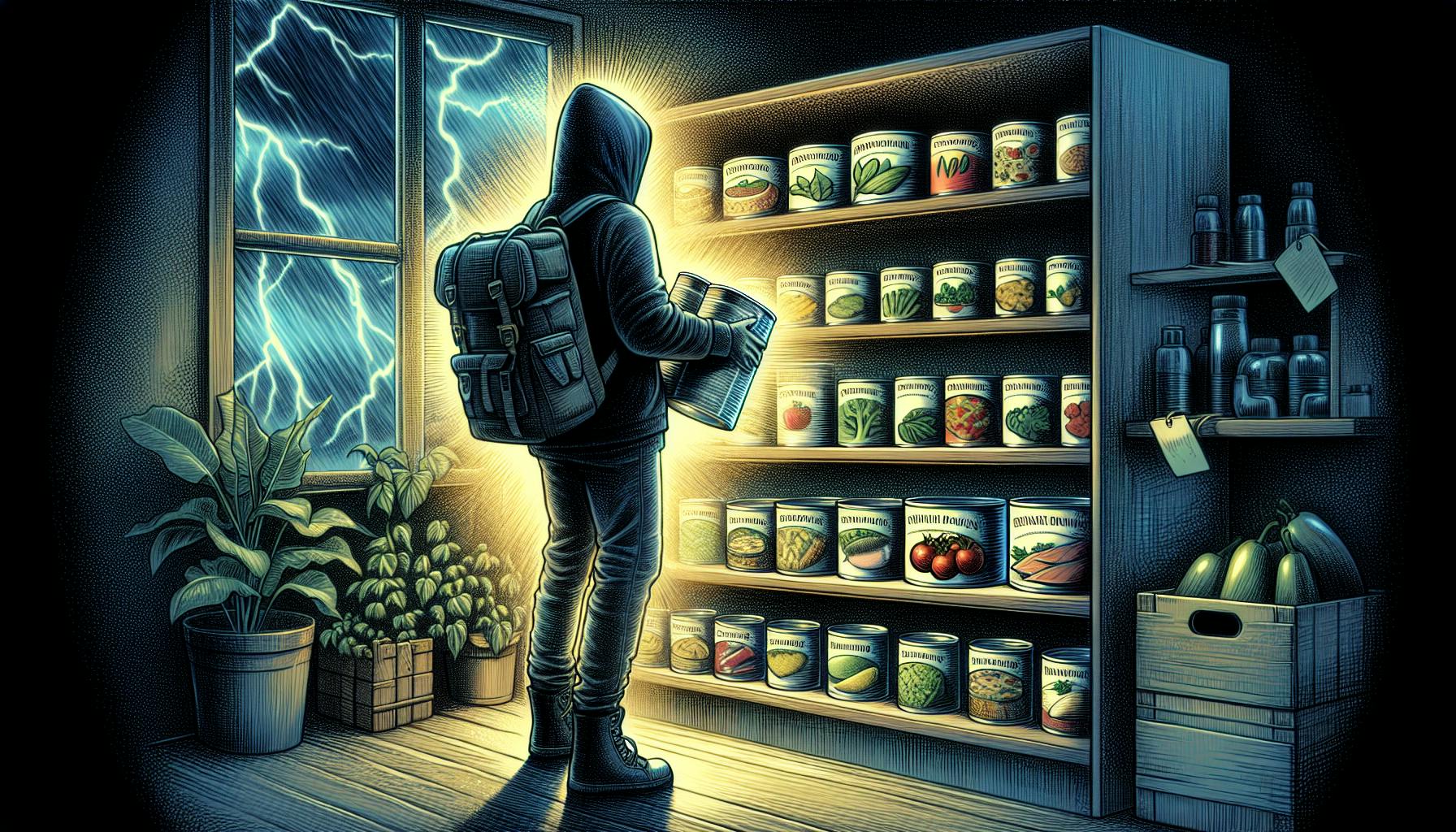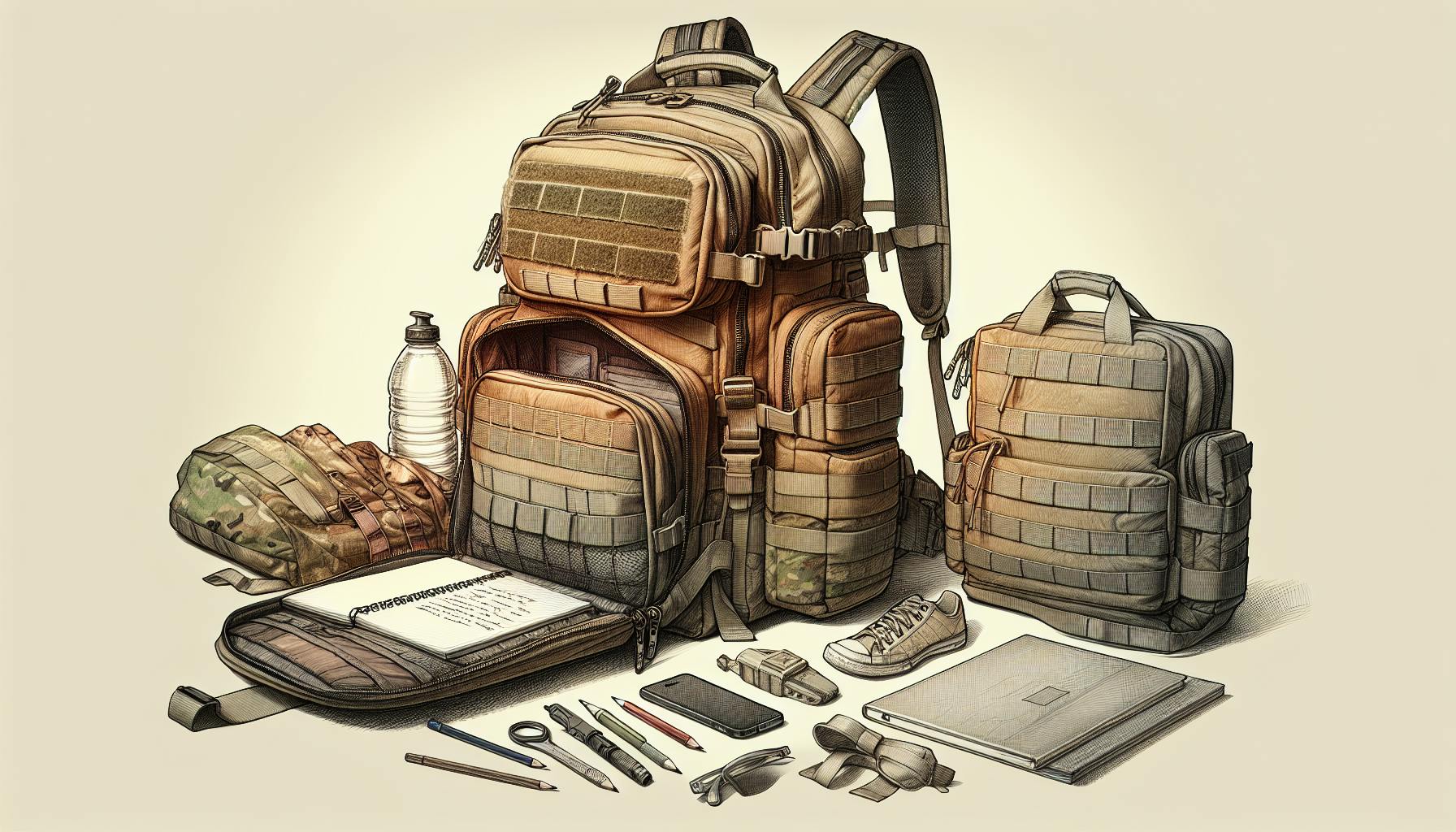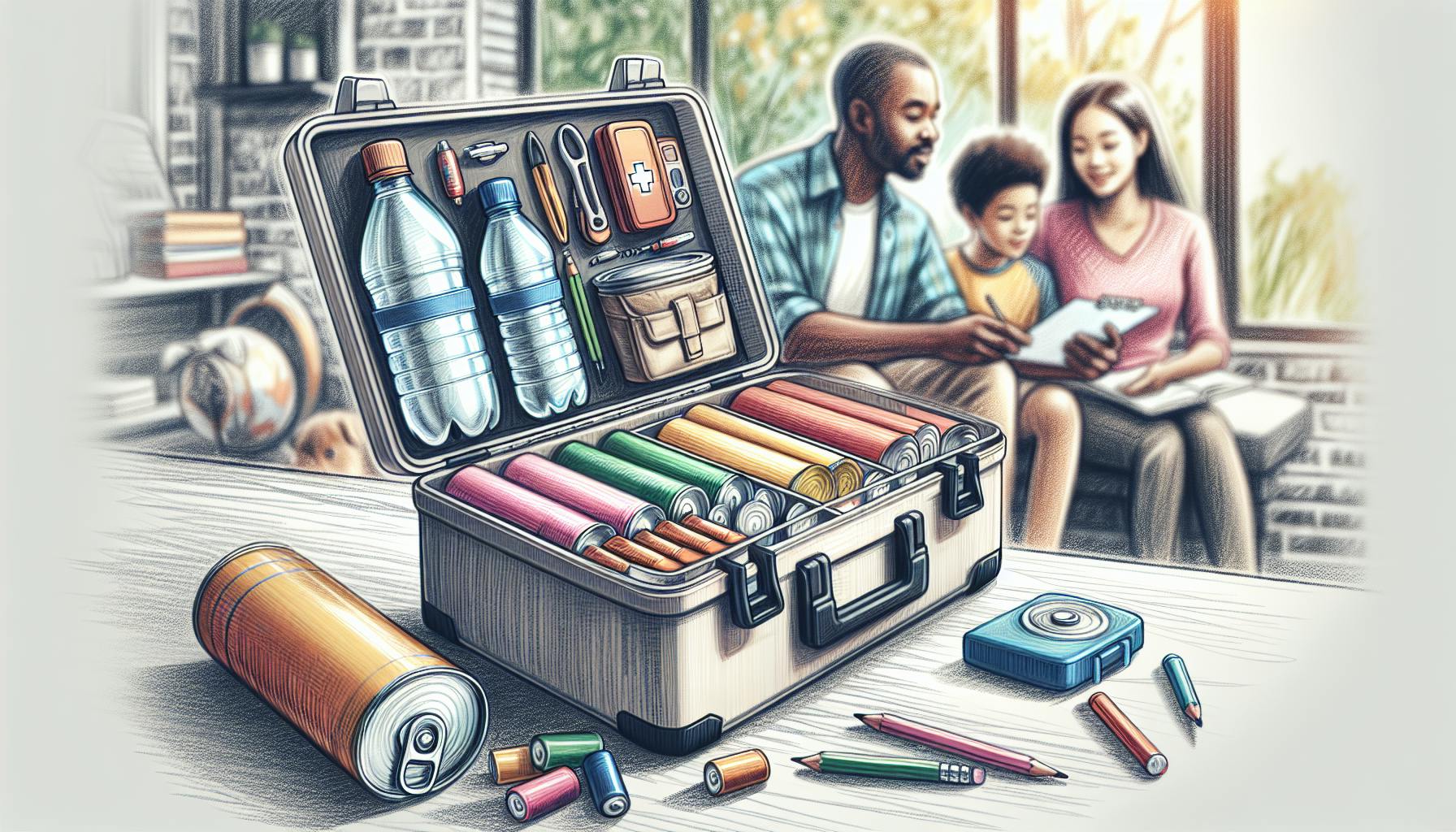When preparing an emergency kit, most would agree that including nutritious, long-lasting freeze-dried foods is essential.
By understanding key selection criteria like nutritional balance, caloric density, and dietary restrictions, you can equip your kit with appetizing, sustaining freeze-dried meals to get you and your family through a crisis.
In this post, you'll learn insider tips on choosing the most nutritious and practical freeze-dried foods for your unique needs, from calculating ideal calorie counts to navigating food allergies and intolerances.
Introduction to Freeze Dried Survival Foods
Freeze dried foods can be a critical component of an emergency preparedness kit. When selecting freeze dried meals, it's important to consider nutritional balance, caloric needs, storage, and any dietary restrictions.
Understanding the Benefits of Freeze Dried Meals
Freeze dried foods offer several key advantages:
-
Long shelf life: Properly stored, freeze dried meals can last 5-25 years. This makes them ideal for emergency kits.
-
Lightweight: The water is removed, so these meals are much lighter than canned goods. Easy to transport if you need to bug out.
-
Easy to prepare: Just add hot water and the meal is ready in 10-15 minutes. No cooking needed.
Evaluating Best Freeze Dried Survival Foods
When choosing freeze dried survival foods, look for:
-
High calorie count per serving size to meet energy needs in a crisis.
-
Balanced mix of carbs, protein, and healthy fats. Avoid added sugars.
-
Natural ingredients with no artificial additives.
-
Positive reviews on taste and texture.
Popular picks like Mountain House meals meet these criteria.
Storage Solutions for Freeze Dried Food
To extend shelf life, store freeze dried foods in a:
-
Cool, dry place like a basement or root cellar.
-
Food-grade plastic bucket with gamma seal lid. Add oxygen absorbers.
-
Mylar bag with oxygen absorbers, then place inside bucket.
Navigating Dietary Needs with Freeze Dried Options
Many brands offer gluten-free, vegetarian, and allergen-free meals. Read labels carefully if you have restrictions.
For diversity, also consider adding freeze dried fruit, vegetables, butter, and ice cream to your kit.
Mountain House Freeze Dried Food: A Closer Look
Mountain House is the gold standard for freeze dried survival foods. Their meals are calorie-dense, use quality ingredients, and have a 30 year shelf life. Menu options accommodate most dietary needs. For long-term emergency planning, Mountain House is a reliable choice with proven nutrition and taste.
Is freeze-dried food good for survival?
Freeze-dried food is an excellent option for building your emergency food supply and survival kit. Here are some of the key benefits of stocking up on freeze dried survival foods:
-
Long shelf life - Properly stored, freeze-dried foods can last 25-30 years. This makes them perfect for long-term food storage.
-
Lightweight - The water is removed during the freeze drying process, making these foods very lightweight and compact. Easy to store and transport.
-
Nutrient retention - Freeze drying locks in up to 97% of the original nutrients. Providing energy and nutrition when you need it most.
-
Variety - There are many freeze-dried options to build a well-rounded food supply with fruits, vegetables, meats and complete meals.
-
Simple preparation - Just add hot water and the freeze-dried food rehydrates in minutes. No cooking required.
The bottom line is freeze-dried survival food checks all the boxes - shelf life, portability, nutrition and ease of use. Stocking up on high-quality freeze dried meals and ingredients is one of the best investments you can make to be prepared.
What is the life expectancy of freeze-dried food?
Freeze-dried foods can have an exceptionally long shelf life if stored properly. Most freeze-dried meals and ingredients will last 20-30 years when kept in a cool, dark place with minimal exposure to oxygen and moisture.
The key factors that determine freeze-dried food shelf life include:
-
Temperature - Storing at temperatures between 50-60°F is ideal. Higher temperatures will shorten shelf life.
-
Humidity - Exposure to moisture causes food to degrade faster. Keeping freeze-dried items in air-tight containers with oxygen absorbers helps maintain quality.
-
Light - Light can accelerate food spoilage. Store in opaque containers away from light sources.
-
Oxygen - Oxygen absorbers in packaging keep air exposure minimal to prevent oxidation.
While most freeze-dried foods are labeled with a 20-30 year shelf life estimate, that duration is never guaranteed. Proper storage is essential to maximize longevity. Periodically check products for signs of moisture, texture changes, color shifts, or rancid odors which signal it may be time to replace them. With optimal conditions, freeze-dried foods can safely sustain you through an emergency for decades.
What is the most nutritious freeze-dried food?
When selecting freeze-dried survival foods, nutritional value should be a top priority. The healthiest options are whole, real foods that retain their natural vitamins and minerals through the freeze-drying process.
Focus on Natural, Minimally-Processed Ingredients
Choose freeze-dried fruits, vegetables, eggs, meats, and seafood over heavily processed, artificial meals. Ingredients like frozen berries, broccoli, salmon, and cage-free eggs provide complete nutrition profiles without unnecessary additives.
Prioritize dark-colored produce like acai, blueberries, strawberries, and spinach for antioxidant and vitamin richness. Lean proteins like chicken, tofu, and whey are excellent sources of energy and muscle recovery. Healthy fats from nuts, seeds, olive oil, and salmon support cognitive function.
Check Nutrition Labels
When selecting prepared, freeze-dried meals like Mountain House, compare nutrition labels. Look for options with higher protein, fiber, vitamins, and mineral content and less saturated fat, sodium, and sugar.
For example, a chicken and rice dinner with 15g protein and 5g fiber is better than one with 10g protein and 2g fiber. Getting sufficient macronutrients ensures you have the energy needed to perform physically demanding survival tasks.
Accommodate Dietary Needs
Factor any dietary restrictions into your choice of freeze-dried foods. Options like dairy-free, gluten-free, vegetarian/vegan, kosher, halal, and allergen-free meals allow you to survive comfortably.
Prioritizing nutrient-dense real foods over processed items gives you the best nutritional bang for your buck. With sound choices, freeze-dried foods can form the resilient backbone of your emergency food supply.
sbb-itb-b932644
What foods Cannot be freeze-dried?
When stocking up on freeze dried survival foods, it's important to know which foods do not freeze-dry well. Some items simply don't hold up to the freeze-drying process or don't rehydrate properly later. Here's a quick list of foods you'll want to avoid when building your emergency food supply:
-
Honey - The natural sugars in honey make it nearly impossible to freeze-dry effectively. Honey becomes extremely thick and sticky.
-
Mayonnaise - High fat and oil content prevents mayonnaise from freeze-drying properly. It can turn rancid after rehydration.
-
Butter - Like mayonnaise, butter has too much fat to effectively freeze-dry. It would need stabilizers and emulsifiers to hold its texture.
-
Nuts - High oil nuts don't rehydrate well. They become soggy and lose their crunch. Exceptions are roasted nuts or nut pieces.
-
Nut butters - Peanut butter and other nut butters separate and turn grainy or oily when rehydrated after freeze-drying.
-
Pure chocolate - Chocolate requires additional sugars and dairy to retain texture after freeze-drying. It becomes crumbly and hard to work with.
-
Syrups - High sugar syrups like maple syrup crystallize during freeze-drying. They can also be difficult to rehydrate smoothly.
-
Jams and preserves - The high sugar and fruit fiber content of jams and preserves makes them problematic. They can crystallize or turn unpleasantly gummy.
Stick to freeze-dried fruits, vegetables, grains, proteins, and full meals designed for the process. And leave the problem foods off your emergency food supply list!
The Essentials of Freeze Dried Survival Food Selection
Top Picks for Freeze Dried Entrees
When selecting freeze dried entrees for your emergency food supply, focus on meals that provide a balance of protein, carbohydrates, and nutrients. Top picks include:
-
Mountain House Beef Stroganoff: Tasty, hearty meal with beef, noodles, mushrooms, and onions. Provides protein and carbs.
-
Mountain House Chicken Teriyaki with Rice: Savory chicken and vegetables over rice. Good source of protein, carbs, and nutrients.
-
Mountain House Chili Mac with Beef: Classic chili macaroni and beef meal. Filling comfort food with protein, carbs, and spices.
Prioritize meals with meat for protein, whole grains for sustained energy, and vegetables for nutrients. Pay attention to calorie counts to ensure your daily intake meets survival needs.
The Importance of Freeze Dried Fruit in Your Kit
In an emergency situation, freeze dried fruits are vital for providing essential vitamins and minerals. Key benefits include:
- Lightweight and compact - Easy to store and transport
- Long shelf life of 25+ years
- Supports immune system with antioxidants
- Provides fiber to aid digestion
- No need to refrigerate or prep
Focus on a variety of fruits like strawberries, blueberries, mangos, apples, and bananas to give your body diverse nutrients. The simple sugars also boost morale and provide quick energy when needed.
Indulging in Freeze Dried Ice Cream and Treats
Though freeze dried ice cream and desserts aren't necessities, they positively contribute to mental health in stressful situations. Benefits include:
- Comfort food improves mood and reduces anxiety
- Familiar flavors provide sense of normalcy
- Sugary boost of quick energy
- Long shelf life with minimal storage needs
In moderation, treats like ice cream sandwiches and fudge brownies can make dire circumstances more bearable. Just be mindful of limiting sugar and empty calories.
Hydration and Beverage Options in Freeze Dried Form
Proper hydration is critical in emergency scenarios. Freeze dried drink mixes offer lightweight, portable options:
- Add hot or cold water for tea, coffee, juice, and sports drinks
- Require minimal storage space
- Offer variety and flavors
- Provide electrolytes/nutrients lost through sweat
Focus on an assortment like coffee, tea bags, powdered Gatorade, and apple cider mix packets. Having diverse beverages prevents flavor fatigue and ensures sufficient daily fluid intake.
Constructing Your Personalized Freeze Dried Survival Kit
When assembling your freeze dried food supply for an emergency kit, it's important to calculate the unique caloric and nutritional needs of your household. Here are some key considerations:
Calculating Caloric Needs for Emergency Situations
- Estimate calorie requirements for each family member based on age, gender, size, and activity level. Generally plan for 2,000-2,500 calories per day.
- Allow for extra calories to account for cold weather, manual labor, and high stress during an emergency. Increase supply by 20-30% above normal intake.
Ensuring Nutritional Diversity with Freeze Dried Foods
- Choose a variety of entrees like beef stroganoff, chicken teriyaki, and vegetable stew for balanced nutrition.
- Include freeze dried fruits and vegetables like apples, peas, and broccoli for fiber, vitamins and minerals.
- Incorporate high calorie freeze dried nuts, trail mixes, and nut butters to help meet energy needs.
Special Considerations for Allergies and Dietary Restrictions
- Select gluten-free, dairy-free, or vegetarian/vegan options as needed for household members with food allergies or intolerances.
- Accommodate needs like diabetes or high blood pressure with low-sugar and low-sodium offerings.
Organizing and Storing Your Freeze Dried Food Supplies
- Categorize meals by type and pack in labeled plastic bins or bags to keep varieties separate.
- Store in a cool, dark place like a basement or cellar to maximize shelf life of 25-30 years.
- Consider vacuum sealing portions in Mylar bags with oxygen absorbers for added moisture protection.
By calculating caloric requirements, ensuring nutritional diversity, accommodating dietary restrictions, and properly storing supplies, you can construct a personalized freeze dried survival food kit tailored to your household's unique needs.
Comparative Analysis: Freeze Dried Foods vs. MREs
Freeze dried foods and MREs (Meals, Ready-to-Eat) both offer convenient, long-lasting options for emergency food preparation. However, there are some key differences to consider when deciding which is best for your survival kit.
Nutritional Content and Taste Comparison
Freeze dried foods retain more of their original texture and flavor compared to MREs. Rehydrating freeze dried meals brings back a similar consistency to fresh foods. However, nutritional content can vary more widely depending on the specific freeze dried ingredients.
MREs provide a nutritionally balanced meal by design, though some find the taste lacking compared to civilian freeze dried alternatives. Newer generations of MREs have focused on improving flavor.
When choosing between them, consider whether consistent nutrition or more appetizing taste is a higher priority for you. Those with dietary restrictions should verify if their needs are met.
Shelf Life and Storage Requirements
Properly stored freeze dried foods can last up to 25 years, while MREs last around 5 years. However, freeze dried foods must be kept sealed and require careful temperature and moisture control to achieve maximum shelf life. MREs are more durable and can withstand temperature fluctuations.
If you lack ideal storage conditions, MREs may be the safer choice to avoid spoilage over time. Those with more controlled storage can better leverage the long-term viability of freeze dried ingredients.
Ease of Preparation in Emergency Conditions
MREs only require water and 5-10 minutes of rehydration time before being ready to eat. Freeze dried foods need hot water for best results, and take 15-20 minutes to fully rehydrate meals. Boiling water may be difficult in some emergency situations.
If ease and speed are critical, MREs offer the simplest solution. But for non-urgent needs, taking a bit more time to prepare freeze dried foods may be worthwhile for improved taste. Consider your likely emergency scenarios.
Cost and Availability Considerations
Ounce for ounce, freeze dried foods often cost significantly more than MREs. However, MREs typically cannot be purchased without military or government affiliation. Quality civilian freeze dried alternatives are more readily available to most consumers.
Plan your budget accordingly, and verify sourcing options if relying on MREs over the long term. Prioritize affordability or consistent access as needed.
In summary, freeze dried meals offer better taste and ultra long-term storage compared to MREs, while MREs provide balanced nutrition, ruggedness, and quick preparation. Evaluate your priorities and situation to decide which solution best fits your emergency food prep needs.
Conclusion: Final Thoughts on Freeze Dried Survival Foods
Emphasizing Variety and Nutritional Balance
It's important to have a wide variety of freeze dried foods in your emergency kit to meet all of your nutritional needs. Aim for meals with a balance of protein, fruits and vegetables, whole grains, and healthy fats. Consider adding some freeze dried fruit, vegetables, or meat to basic entrees to increase nutrients. Variety also prevents taste fatigue if relying on your kit for an extended time.
Importance of Proper Storage Techniques
To maximize shelf life and preserve nutrients, store freeze dried foods in a cool, dry place like a basement or interior closet. Use oxygen absorbers and seal containers tightly. Rotate stock every 6-12 months, using oldest pouches first. Proper storage keeps foods safe for years.
Addressing Special Dietary Requirements
Those with medical conditions or allergies should vet ingredients carefully first. Many brands offer gluten-free and vegetarian options. If current offerings don't meet your needs, consider making your own customized meals to freeze dry at home. This ensures you have suitable foods on hand.
The Value of Taste Testing and Familiarization
Before an emergency, try some pouches to acquaint yourself with flavors and preparation. This prevents unpleasant surprises later regarding taste or texture. It also helps build skills in reconstituting meals. Consider setting up occasional practice drills to cook and eat the foods as you would in a real situation.


